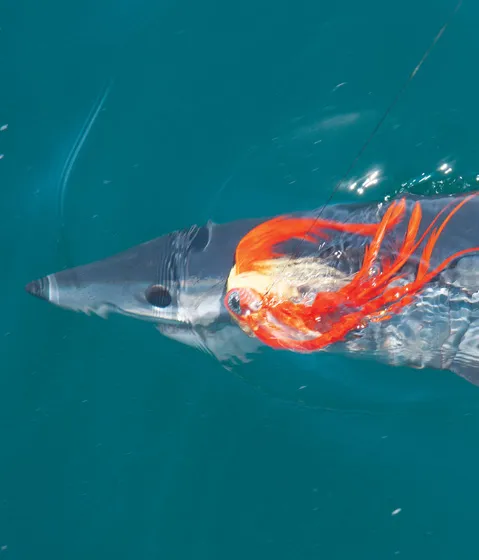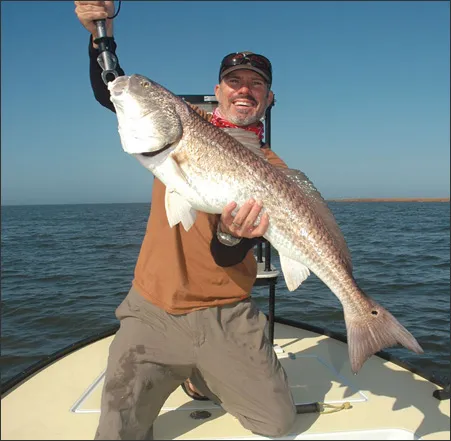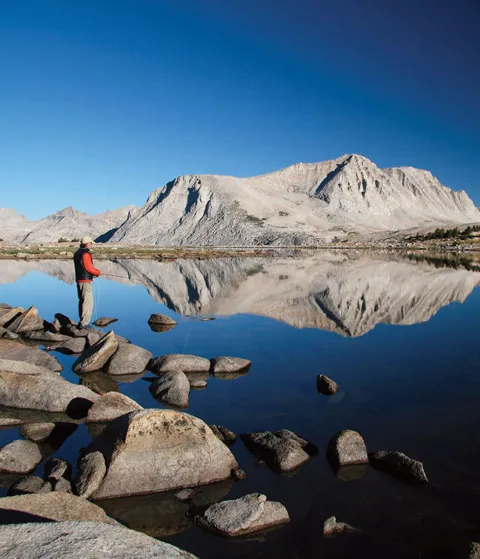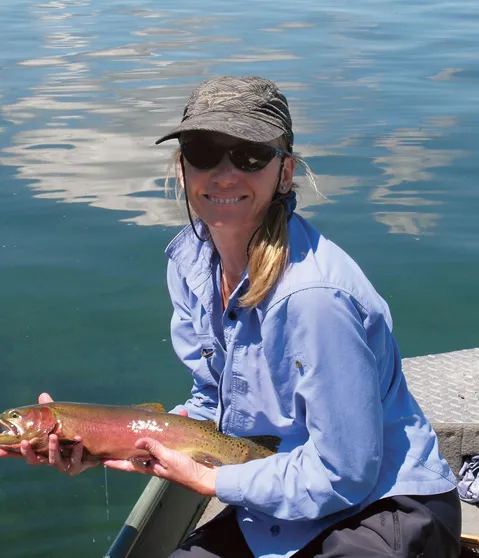
- 160 pages
- English
- ePUB (mobile friendly)
- Available on iOS & Android
eBook - ePub
About this book
Chris Santella, bestselling author of the Fifty Places series, is back in action with the inspirational gift book Why I Fly Fish. Based on 25 interviews with fly-fishing professionals and celebrity hobbyists alike, Why I Fly Fish encapsulates the life lessons fly-fishing aficionados have learned from their favorite pursuit. Featured contributors include Donald Trump Jr., Bill Ford (CEO of Ford Motor Company), Conway Bowman (host of several flyfishing TV programs), actor Henry Winkler, Lefty Kreh (the worlds best-known fly-fisherman) and many more. With personal photographs by the contributors themselves, Why I Fly Fish is an inspirational and intimate reflection on the beloved sport and pastime.
Frequently asked questions
Yes, you can cancel anytime from the Subscription tab in your account settings on the Perlego website. Your subscription will stay active until the end of your current billing period. Learn how to cancel your subscription.
At the moment all of our mobile-responsive ePub books are available to download via the app. Most of our PDFs are also available to download and we're working on making the final remaining ones downloadable now. Learn more here.
Perlego offers two plans: Essential and Complete
- Essential is ideal for learners and professionals who enjoy exploring a wide range of subjects. Access the Essential Library with 800,000+ trusted titles and best-sellers across business, personal growth, and the humanities. Includes unlimited reading time and Standard Read Aloud voice.
- Complete: Perfect for advanced learners and researchers needing full, unrestricted access. Unlock 1.4M+ books across hundreds of subjects, including academic and specialized titles. The Complete Plan also includes advanced features like Premium Read Aloud and Research Assistant.
We are an online textbook subscription service, where you can get access to an entire online library for less than the price of a single book per month. With over 1 million books across 1000+ topics, we’ve got you covered! Learn more here.
Look out for the read-aloud symbol on your next book to see if you can listen to it. The read-aloud tool reads text aloud for you, highlighting the text as it is being read. You can pause it, speed it up and slow it down. Learn more here.
Yes! You can use the Perlego app on both iOS or Android devices to read anytime, anywhere — even offline. Perfect for commutes or when you’re on the go.
Please note we cannot support devices running on iOS 13 and Android 7 or earlier. Learn more about using the app.
Please note we cannot support devices running on iOS 13 and Android 7 or earlier. Learn more about using the app.
Yes, you can access Why I Fly Fish by in PDF and/or ePUB format. We have over one million books available in our catalogue for you to explore.
Information
Publisher
Stewart, Tabori & ChangYear
2013Print ISBN
9781617690242eBook ISBN
9781613124604
THE PERSPECTIVES



Conway Bowman made his reputation catching makos on a fly rod. Mako flies are a foot long and tied on 8/0 hooks.
IF YOU’VE EVER BEEN INCLINED to scan your cable offerings in search of a flyfishing infusion, chances are good that you’ve come upon an intense Californian with piercing blue eyes—namely, Conway Bowman. Conway has played host on several fishing shows, most recently Fly Fishing the World on the Sportsman Channel. Most would agree that Conway’s ongoing quest for mako sharks in the waters off San Diego, California, has catapulted him to fly-rod celebrity, a status that has all the gravitas in the nonfishing world of being, in his words, “the world’s tallest midget.” Although sharks may have placed an exclamation point on Conway’s fly-fishing career, smaller prey provided an early defining moment.
“I grew up in the San Diego area,” Conway began, “and my dad was a schoolteacher. In the summer months, he’d go to Idaho to fly fish, and he’d take me along. One day when I was eight, we were fishing on the Henry’s Fork. My dad had waded out toward the middle of the river, as there were lots of trout rising out there. I was stuck on the bank with my fly rod, as I was too small to wade. A man with a moustache and a white ten-gallon hat walked up. To an eight year old, he looked like the Marlboro Man. ‘How’s it going?’ he asked. ‘Are you catching anything?’ I was a little dejected and said ‘Nope.’ He said, ‘Okay, tie this ant on and cast down the bank.’ ‘Right next to the bank?’ I asked, and he said ‘Yep.’ I tied the ant on and on the third or fourth cast, I caught a sixteen-inch rainbow. The stranger—who turned out to be Mike Lawson (who started Henry’s Fork Anglers)—netted the fish and showed it off to my dad, who came to the bank at that moment with a gigantic trout of his own. That was the first time I ever saw a fish come up and take the fly. I can still see the take, still hear Mike telling my dad about the fish I’d caught.”
Summers were fruitful on the fly-fishing front for Conway, but the rest of the year was a bit lacking. There just aren’t many trout streams in greater San Diego. After spending a few winters fishing for bass in local reservoirs, Conway noticed a fairly large body of water to the west and realized that it might hold promise…and that sharks were among the most plentiful sport fish off the coast of San Diego. “I bought a seventeen-foot aluminum skiff with a twenty-five horse tiller–controlled motor and a compass and handheld radio,” Conway explained. “I would run that skiff so far out that I couldn’t see land! There were some dicey times when the fog would roll in and I was ten miles out to sea but I made it back and look at those times as not stupid moves, but valued learning experiences. The first time I went fly fishing for sharks, I conned one of my buddies, Mike Seim, to venture out with me. We set a chum slick (a stew of yellowtail carcasses, seasoned with a few tablespoons of menhaden oil), and by the end of the day we had landed twenty-five blue sharks ranging from four to eight feet long. At that point I realized that I was onto something fly-rodding for sharks. But it took me two years to catch my first mako on the fly.” (Sadly Mike, who went on to become a well-respected guide in Montana, died in 2011.)
Suffice it to say, fly fishing for mako sharks is not a dainty game. In addition to the telephone pole of a fly rod, reels are outfitted with eight hundred yards of backing, a stainless steel leader, and foot-long blaze orange flies tied on 8/0 hooks. On an average day, Bowman will motor a few miles offshore to a spot where a current moves through. The current will broadcast a chum slick, which draws sharks close because of its olfactory appeal. Sometimes it takes a while for a shark to appear, sometimes its appearance is almost instantaneous. “When you’re fishing for makos, the sharks are hunting you, not the other way around,” Conway said. “They’re not shy; when they turn on, they’re like heat-seeking missiles.” Casts need not be long or terrifically accurate; the shark will generally find any fly within a five-foot radius. Once the shark chomps down on the fly, get ready: Some fish will take out three or four hundred yards of line in a run and are celebrated for their astounding leaps, which can reach twenty feet above the water!
There is a sense of bravado in big-game fishing, and the audacity to chase mako sharks with a fly rod only ups the ante. Yet Conway’s eagerness to have his clients stick a shark is balanced by a great admiration and respect for these animals—and a desire to cease their senseless slaughter by “sportsmen.” To this end, he’s launched Flying Mako, a catch and release fly-fishing tournament where proceeds go toward shark conservation efforts. He has also tried to persuade by example.
“I got to know a commercial fisherman who caught and killed a lot of sharks with a handline,” Conway recalled. “I think he thought I was one step above the village idiot, casting to them with a fly rod. One time we were fishing pretty close by each other, and I hooked a shark. It nearly jumped into his boat. He came over afterwards and said, ‘Boy I thought I fished light tackle!’ We moored our boats at the same marina, and he’d come over some days and ask how I did. When he decided that I wasn’t a threat to what he was doing, he began to share hints about where to find the sharks on certain tides. This began to bring the mako’s behavior into context for me.
“I changed marinas and didn’t see him for a number of years, and then I ran into him. He told me that he’d gotten out of commercial fishing—killing makos just started to feel weird. ‘I want to do what you do—take people out to catch makos so they can see what great adversaries they are, then put them back.’ After his first trip, he stopped by my house to tell me about his day. ‘I had two kids and a dad, and we released ten makos. I apologized to every fish before I let it go for all the sharks I killed. Seeing the look on those kids’ faces when we got the sharks up to the boat—I’ve never had a better day on the water in my life.’”
Conway has ambivalent feelings about fly fishing on television. “It’s a weird dynamic,” he reflected. “A big part of the reason that I like to fish is a chance to get away from crowds and be alone with my thoughts. When we’re filming a segment, it’s not my space anymore, as I have all the crew along, and I need to remember that I’m not just fishing; we’re making a program. But on the other hand, I love the idea that the program may be inspiring viewers to go out and do something that’s brought me so much satisfaction—to go out and fly fish for carp, or a shark, or a steelhead, or a bluegill. Each fish is unique and presents challenges in its own way, whether it’s a six-inch brook trout or a six-foot mako shark. I don’t discount any species, as long as it’s caught on a fly rod and done in a sporting manner. For me, it’s all thrilling and all connected. It’s about the journey.”

ABOUT THE ANGLER
CONWAY BOWMAN is the owner and operator of Bowman Bluewater. He began fly fishing in Idaho at eight years old. Since then he’s mastered the river, lake, and sea. He has hosted ESPN’s In Search of Flywater and is now the host of Fly Fishing the World on the Sportsman Channel. Conway is the current International Game Fish Association (IGFA) world-record holder of redfish on ten-pound test—a 41.65-pound bull. He lives in the San Diego area with his wife, Michelle, and son, Maximillian.


The lakes of the High Sierra hold a special appeal for Lisa Cutter.
LISA CUTTER AND HER HUSBAND RALPH have made a career as fly-fishing instructors. It seems fitting that her entrée to the sport started with a lesson.
“When I met Ralph, neither of us had really fly fished,” Lisa began. “We did a little fishing together with spinning rods and a fly with a bubble, but we were more interested in rock climbing and hiking. We were living in Squaw Valley, California, at the time, and we saw a flyer for a fly-fishing class. We took it on a pure whim. It turned out that the class was being taught by the late Mel Krieger, one of the great flyfishing teachers of his generation. We had no idea who Mel was at the time, but we decided that we enjoyed fly fishing, and it was quickly an important part of our lives.”
At the same time that fly fishing touched Lisa’s and Ralph’s lives, they began their long love affair with the Sierra—the mountains that naturalist John Muir called “the range of light.” “For our honeymoon, we hiked the California stretch of the Pacific Crest Trail,” Lisa continued. “When you’re living in the Sierra for five months—getting up with the sun, going to bed with the sun—you really get in touch with the Sierra cycle. That experience helped set the stage for the lives we have today. We’ve fished many places around the world, and they’ve all been beautiful and intriguing in their own way. But if I had to pick one place that’s beautiful and has great fishing, it would be right here in the Sierra Nevada.”
Lisa and Ralph had no grand vision of starting a fly-fishing school as they became more enamored of the sport. “I guided for a while but found it unfulfilling,” Lisa said. “I wasn’t that interested in putting people into numbers of fish. I wanted to teach people how to fish. You have an opportunity to do this when you’re guiding, but people may have different expectations. There was one outing that really turned me off on guiding. I had a guy out on the Truckee River, and he landed five really nice fish. That’s a pretty good day on the Truckee, but the angler was really bummed out. I just didn’t get it. It was a spectacularly beautiful day and the guy was getting fish, but it wasn’t enough.
“At the time we started the school (California School of Flyfishing), there weren’t really any fly-fishing schools around. Without a blueprint to work from, it just sort of evolved. The school format was attractive not only for the teaching focus; it would allow us to create a more predictable schedule so we could get our own fishing in! We offer both introductory and advanced classes; I do all the intro classes. I really enjoy the chance to turn people on to fishing. Some of the seasoned anglers in the advanced classes can be a little jaded, but not the beginners. Some know next to nothing—I’ve had students who didn’t realize there were aquatic insects in the river—but they have the desire to learn. Some of the students are billionaires; some have saved for two years to be able to attend. People from all walks of life can come together over fly fishing. I get as excited as the students do; it’s a great privilege to be able to introduce someone to something that you cherish. There’s nothing more rewarding than reaching the end of a class and seeing your students bursting with excitement. I’ll sometimes get letters or emails from people I taught years back thanking me for opening up a new spiritual part of their life.”
In many parts of the world, California’s best-known fish is the rainbow trout; it was McCloud River rainbows and Russian River steelhead, after all, that were shipped south to Patagonia and west to New Zealand to populate those region’s rivers. Yet it’s the diminutive and strikingly colored California golden trout (Oncorhynchus aguabonita aguabonita) that’s recognized as the state fish. Goldens—believed to have evolved from redband rainbows that colonized the Kern River drainage in the southern Sierras—are present in some three hundred lakes and more than two hundred miles of streams in the Golden State. (The fish have been introduced into many of these systems.) The pursuit of golden trout in the high country is a perfect fusion of Lisa’s loves of backpacking and fishing. “Once or twice a year, Ralph and me will head into the High Sierras to pursue these little gems,” she added. “They are so beautiful, and the places where you find them are that much more remote. You have to work a little bit more to get there, but that makes the reward that much richer. In the end, it’s all about the adventure.”
There are many ways you can derive enjoyment from a fishing trip: catching a big fish, catching a lot of fish, catching a fish you really had to work for, or as Lisa described, not fishing at all. “When we lived in Truckee full-time, we’d take our dinner and a bottle of wine down to the river four or five times a week in the summer. We had plenty of good dinner spots if someone happened to be in the water when we arrived at one. When you know the river as well as we do, having dinner there is as good as fishing. You can just take it all in and lose yourself as you gaze at the expanse of the river, or focus on the minutiae, the bugs, the close-up patterns on the rocks. Either way it sucks you in, offering up some of my life’s purest moments. You realize at these times that fishing is, at least in part, merely an excuse to take us out to the river.
“I’ve meditated for thirty-seven years. It’s a way I can lose myself for a time, a method for getting away from the chatter that’s in my mind. I think for many people who take up fly fishing, the attractiveness of the sport is the same as what I find in meditation—for the time you’re on the river, it gets you away from the chatter in your mind.”

ABOUT THE ANGLER
LISA CUTTER operates California School of Flyfishing (www.flyline.com) with her husband, Ralph, from Nevada City and Truckee, California. She and Ralph have produced the DVD Bugs of the Underworld and have been profiled in National Geographic Adventure, the Los Angeles Times, Outside, the New York Times, the Wall Street Journal, Sunset, and Playboy. Though they’ve fly fished the world, they remain devoted to their home waters in the Sierra Nevada.


An angler launches a cast at Beaver Island, Lake Michigan—one of Kirk Deeter’s favorite carping spots.
KIRK DEETER BEGAN FLY FISHING FOR LOVE. Initially it was for the love of a woman, not a fish.
“I met Sarah, who would eventually be my wife, at the University of Michigan,” Kirk began. “Her family was from Michigan, and her father/grandfather/greatgrandfather had all fly fished. It was quite a family tradition. They had a cabin on the Pere Marquette River in the western part of the s...
Table of contents
- Cover
- Title Page
- Acknowledgments
- Table of Contents
- Introduction
- The Perspectives
- Photo Credits
- Copyright Page